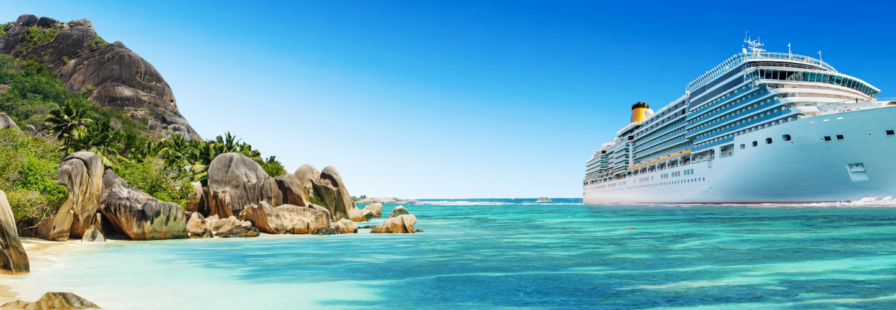It is a necessary component that ensures that ships are adequately staffed and that office operations run smoothly. However, this travel can also contribute significantly to the industry’s greenhouse gas emissions and carbon footprint. According to data from sources such as the International Council on Clean Transportation (ICCT) and sustainability reports from some of the bigger cruise travel companies, crew and passenger travel emissions are estimated to account for 30-47% of Scope 3 emissions.
Promoting Sustainable Transportation Options
Therefore, it is essential to address cruise crew and office travel as part of a comprehensive sustainability strategy. One way to reduce the environmental impact of this travel is by promoting sustainable transportation options. This can be achieved relatively easy for office travel, where solutions can include encouraging the use of public transportation, promoting carpooling and even offering incentives for employees who use low-carbon modes of transportation. Additional strategies can be to invest in technologies that support sustainable travel, such as electric or hybrid vehicles, and renewable energy sources like solar and wind power. For example, a shipping client of ours in the Netherlands has invested in renewable energy to power their offices and facilitates staff electric vehicle recharging.
Additionally, the need for business travel can be re-evaluated and part of it replaced with virtual meetings, reducing the carbon footprint of office travel.
Minimising Crew Travel Emissions through Technology and Optimised Operations
Crew travel, on the other hand, is a bit more difficult as it cannot be replaced. Crew need to travel from home to vessel and back. Nevertheless, minimising crew travel emissions is possible, but it requires a holistic approach that combines technology, optimised operations, and fuel efficiency measures. Some of the measures that can be considered to reduce the carbon footprint of crew travel include adopting virtual training whenever possible, optimising routes and schedules, and using greener flights with lower emissions. The contract duration can also be evaluated without compromising the well-being of the staff. For instance, crew members can be scheduled for regional trips rather than intercontinental ones, and nationalities close to the area where the vessel is cruising can be used. These measures not only reduce emissions but also have a positive impact on the environment.
None of the above measures can be 100% adopted but implementing some of these practices even to a percent, can have a big impact on companies’ sustainability reports.
Creating ‘Green’ Itineraries for Crew and Passenger Travel
There are cruise companies that currently create ‘green’ itineraries based on green shore power availability and offer environmentally friendly excursions. The same can be done for crew and passenger travel. As a company, we conduct studies for our customers to identify the most cost-effective crew change locations, taking into consideration the environmental impact of travel.
Prioritising the Well-Being of Cruise Crew and Office Personnel
Finally, ensuring the well-being of cruise crew and office personnel is crucial for the sustainability of the cruise industry. Travel policies and practices should prioritise the health and safety of employees by providing them with adequate rest and recovery time and supporting work-life balance. This is particularly important given the challenging and often stressful working conditions that crew members face, such as long hours and time away from their families. Neglecting the social impact of travel on employees can lead to high turnover rates, decreased job satisfaction, and even burnout. Therefore, addressing the well-being of cruise crew and office personnel should be an integral part of any comprehensive sustainability strategy for the cruise industry.
Reducing the Environmental Impact of Cruise Travel for a Sustainable Future
In conclusion, reducing the environmental impact of cruise crew and office travel is a crucial step towards achieving the industry’s sustainability goals. By promoting sustainable transportation options, adopting fuel efficiency measures, and optimising travel routes and schedules, the industry can reduce its carbon footprint and make travel more environmentally friendly. Moreover, by considering the social impact of travel on employees, the industry can ensure that its sustainability efforts prioritise the health and well-being of its workforce.









